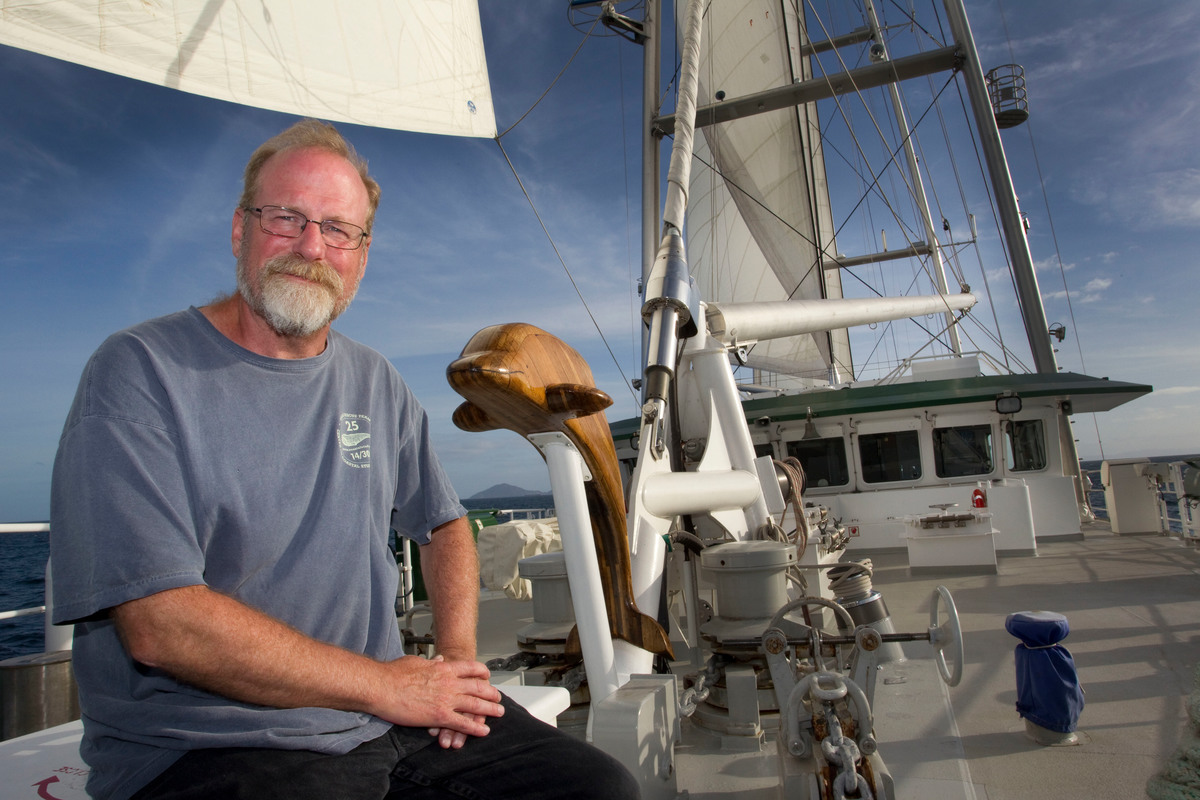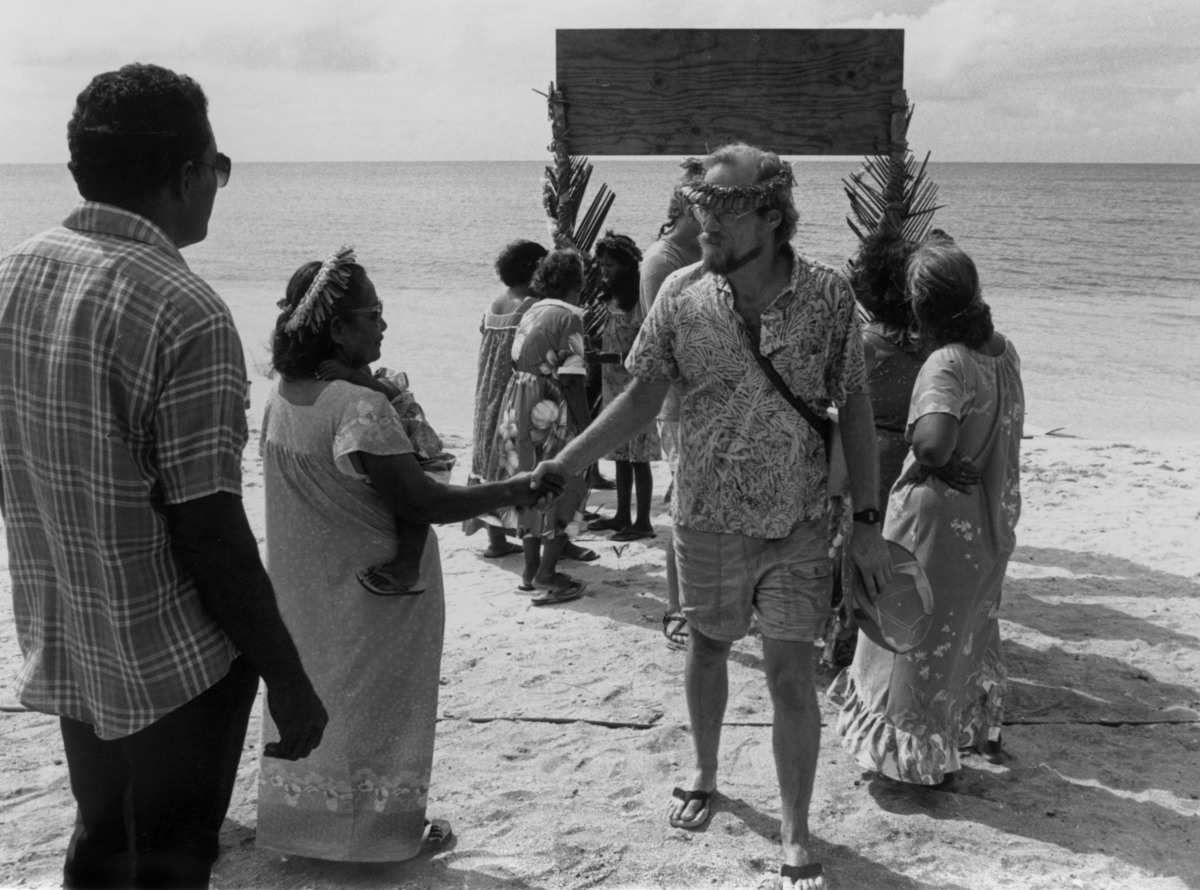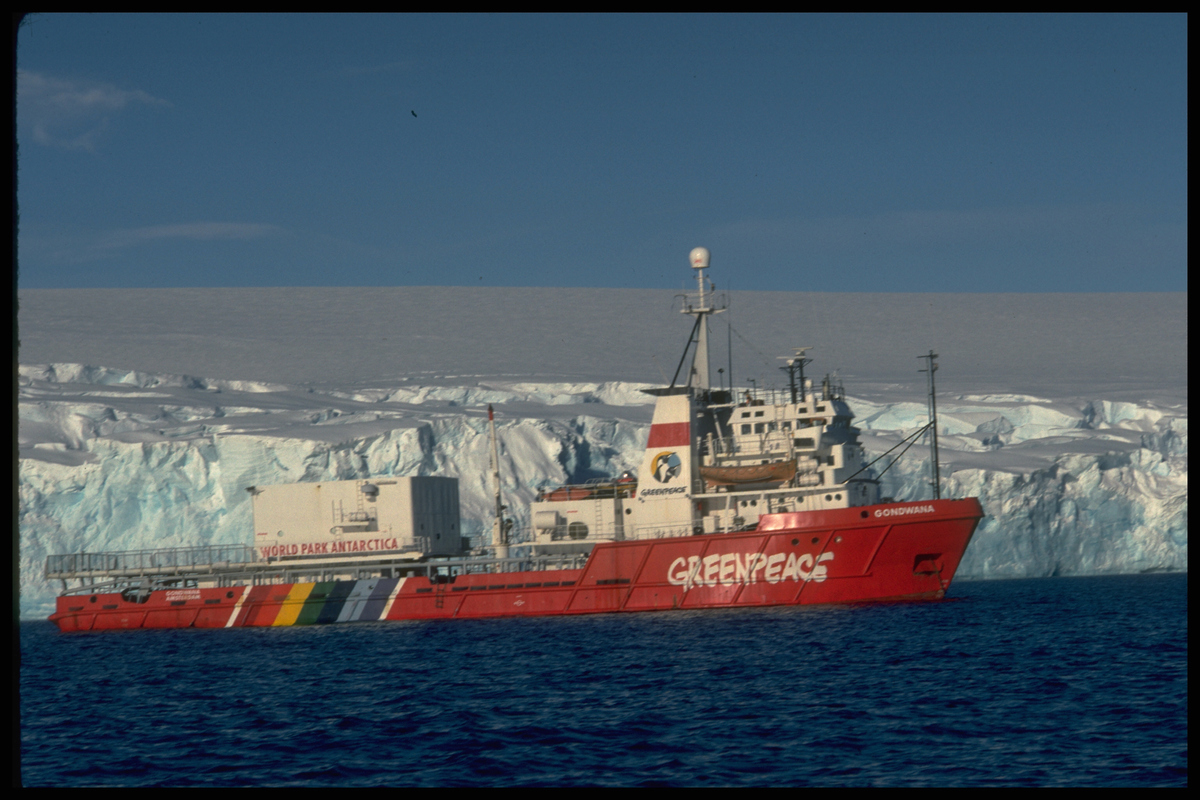After hours, when he wasn’t a driving force in the global struggle to address the climate emergency, or taking a fledgling organisation called Greenpeace out of its tumultuous adolescence into powerhouse adulthood, he was an outstanding blues guitarist, an enviably precise writer, a proud parent of magically gifted children, a sailor, a science fiction fan, and a connoisseur of wry irony.
In his parting instructions, he pointed his wife of more than 30 years, Kelly Rigg, to Lou Gehrig’s farewell speech as a model for his obituary. It’s a short speech in which Lou says almost nothing about the bad break that will shortly take his life, but speaks about the honour he had to live the life he did, and his appreciation of having shared it with the extraordinary people he shared it with.

Steve
Sawyer, a crew member of the original Rainbow Warrior which was bombed
by French secret service agents in 1985 in Auckland, aboard the new
Rainbow Warrior during the ship’s first visit to New Zealand. ©
Greenpeace / Nigel Marple
He previously served in leadership positions at Greenpeace for nearly three decades. At both the Global Wind Energy Council and at Greenpeace, Sawyer was driven by a fierce love of nature and the sea forged in his childhood in New England, which he often described as most happily spent “messing about with boats.”
He studied philosophy at Haverford College (fellow alum Dave Barry wagged that its motto was “We’ve never heard of you either”) where he was steeped in the classics. But his reading of Aldo Leopold, Rachel Carson, Edward Abbey, and Saul Alinsky pulled him toward the rising environmental movement. From Tolkien’s The Lord of the Rings he drew lifelong inspiration for seemingly hopeless causes, and the faith that a small group of principled and courageous under-dogs could, against all odds, change the world.
He was by his own admission a card-carrying hippy when a Greenpeace canvasser knocked on his door looking for a donation. Steve volunteered instead. He went door to door in the Boston area as a Greenpeace canvasser himself, before joining the Greenpeace ship Rainbow Warrior in January 1980 to campaign against the transport and discharge into the ocean of radioactive wastes.
Sawyer’s story and that of the Rainbow Warrior would be entwined throughout Greenpeace’s early days. He lent his maritime knowledge to a refit in Stonington, Maine, blasting rust and painting, and later to converting her to sail to prepare for a crossing of the Pacific Ocean. It was there that the ship took on a mercy mission from which Steve would draw a lifelong sense of pride, relocating the inhabitants of the Rongelap atoll, poisoned by fallout from US atmospheric nuclear weapons tests. Steve and the crew relocated the entire community and all their worldly belongings, whose requests for relocation had been denied by the US Government, despite rising incidences of cancer and birth defects. The event was seared into Sawyer’s heart and imagination.

Campaigner
Steve Sawyer, is welcomed by inhabitants from Rongelap. The Rainbow
Warrior crew is evacuating Rongelap Islanders to Mejato. Rongelap
suffered nuclear fallout from US nuclear tests done from 1946 – 1958,
making it a hazardous place to live. The health of many adults and
children has suffered as a result. The Greenpeace crew took adults,
children and 100 tonnes of belongings onboard. © Greenpeace / Fernando
Pereira
Sawyer’s handling of the aftermath, and the successful suit of the French Government for damages, further propelled his own reputation as a leader and in 1988 he was named Executive Director of Greenpeace International.
Greenpeace had some of its greatest triumphs in the years Sawyer was at the helm – from the declaration of Antarctica as off-limits to gas and oil exploration, to the Montreal Protocol limiting ozone-depleting gasses to an end to radioactive waste dumping at sea worldwide. He also led Greenpeace to begin campaigning in earnest against climate change long before most of the environmental movement understood the threat. According to insiders, his tenure marked the coming of age of an organisation that had once prided itself on its rag-tag mystic hippiedom.

Side view of MV Gondwana, iceberg behind the ship. Arthur Harbour, near Palmer Station (US). © Greenpeace / Robin Culley
To his colleagues, Sawyer will be remembered for the qualities of his leadership: his stubborn courage, his ability to inspire against overwhelming odds, his absence of ego, and his faith in the power of loyalty, integrity, rationality, and commitment. He was Gandalf to a rag-tag fellowship of underdogs, reminding those around him, by his own example, in the face of one existential threat after another, that we cannot choose the time that we are born to, and that our most important task is to decide what to do with the time that is given us.
He is survived by his wife Kelly, his daughter, Layla, and his son, Sam.
Friends and colleagues are invited to post remembrances at Steve’s memorial website.
By Brian Fitzgerald

No comments:
Post a Comment
Note: Only a member of this blog may post a comment.